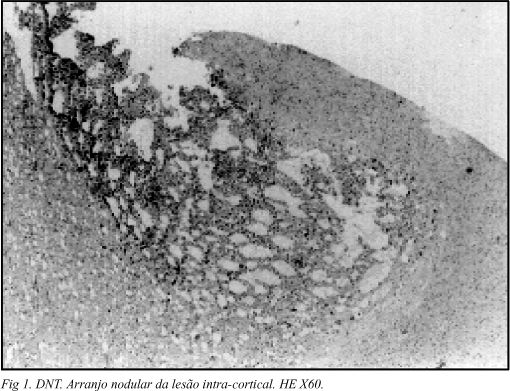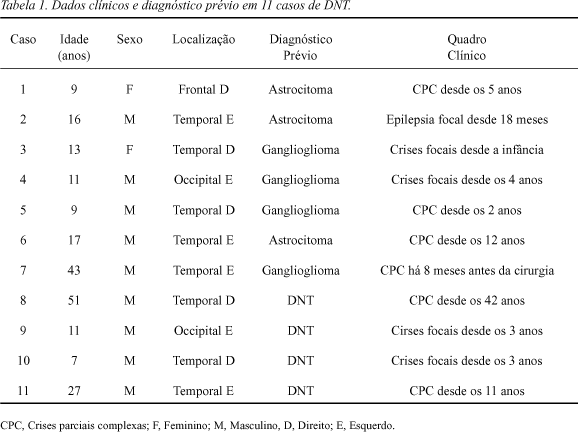The true incidence of dysembryoplastic neuroepithelial tumor (DNT) is unknown. Variable estimations have been advanced according to the type of recruitment of patients. In series of patients with tumors who were operated on for pharmacoresistant epilepsy, the rates varied widely, from 5% to 87%. Among 600 pediatric tumors in a series, 9 DNT (1.5%) were found. Since DNT was identified only in 1988, we reviewed our cases (1975-1991) of gangliogliomas (n=25), oligoastrocytomas (n=9), temporal oligodendrogliomas (n=11), temporal astrocytomas grade II (OMS 1993) (n=44) irrespective to age, as well as all astrocytomas grade II (n=61) and oligodendrogliomas (n=10) in patients up to 20 years of age. Seven DNT were encountered. Four cases had been formerly diagnosed as gangliogliomas and 3 as astrocytomas grade II. From 1992 on, 4 more DNT were diagnosed, making up a total of 11 cases. Eight patients were under age 17 (6y to 17 y, mean 10.3y) and 3 were 27, 42 and 51 year-old. Eight tumors were temporal, 1 frontal and 2 occipital. All patients have had pharmacoresistant epilepsy. Among all neuroepithelial tumors diagnosed in our Division in the last 22 years, DNT comprises 1.2% in patients under age 20 (n=660), 0.24% in patients over 20 years (n=1254), and 0.63% all ages considered (n=1914).
dysembryoplastic neuroepithelial tumor; central nervous system neoplasms; epidemiology; surgery of epilepsy



